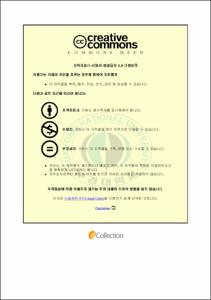이청준 소설에 나타난 병리적 증상과 의미 연구
- Alternative Title
- A Sutdy on the Pathological Problems and Meanings in the Novels by Lee Cheong-jun : On the basis of Medium.Short Novels of 1970's
- Abstract
- A Study on the Pathological Problems and Meanings
in the Novels by Lee Cheong-jun
-On the basis of Medium․Short Novels of 1970's-
Nor Moon-sook
Department of Korean Language and Literature Graduate School.
Pukyong National University
Abstract
Novelist Lee, Cheong-jun wrote his works by focusing on the fact that human psychology or consciousness greatly affects our lives, and has tracked the conflicts and struggles between the external world and our inner world. In addition, he tried to convey the fact that the characters' actions are not only greatly influenced by the external stimulus, but also their authentic inner characteristics. This understanding through the description of characters in the works of Lee shares many similar traits with Freud's psychoanalysis, which proved the understanding human by acknowledging and treating individual wounds.
Freud's psychoanalysis tracks down the origin and process of the symptom to find the fundamental problem. The object relations theory is a useful methodology which proves that the co-existence and fusion of child with the first object mother greatly influences the thereafter human relation building. Just as Freud took importance on the distortion of characteristics development through mental illness, Lee also concentrated on observing the origin of the pathological symptoms and reasons. Accordingly in order to seek the pathological symptoms and reasons in Lee's novelettes, Freud's psychoanalysis and the object relations theory were utilized in this study.
By standardizing Freud's psychoanalysis and the object relations theory for Lee's work analysis, analysis on characters who show neurosis due to inner conflict between ego and id was taken in Passage I of Chapter III. The representative symptoms of neurosis include hysteria, OCD, and depression. In Passage II, observation on characters who show symptoms of psychosis due to external environment which oppress individuals was taken. Psychosis is taken due to conflict between the ego and the external world, with representative symptoms such as schizophrenia and paranoia. In Chapter IV, the intention of Lee's works on pathological phenomena of the modern people are observed by explaining the meanings of the characters' symptoms in terms of the society and the individual.
The analyzed works were limited to novelettes published in the 1970s, extracted from ?wComplete Literature Series of Lee, Cheong-jun?x(Yolimwon). The reason for selecting novelettes of Lee in the 1970s was that it succeeded in visualizing the social and historical pains through the wounds of individuals living in authoritative and oppressive generation. The works for specific analysis include ?uThe Wall of Rumor?v(1972), ?uThe Dream of the Mask?v(1972), ?uSeokhwachon?v(1972), ?uPracticing of Returning Home?v(1972), ?uEcstatic Missing?v(1976), and ?uWinter Agora?v(1976). The observation of characters who suffered from neurosis due to inner conflict between ego and id were observed in?uPracticing of Returning Home?v, ?uThe Dream of the Mask?v, and ?uSeokhwachon?v. The observation of characters who suffered from psychosis due to repression mechanism was observed in Ecstatic Missing?v, ?uWinter Agora?v, and ?uThe Wall of Rumor?v.
The characters in Lee's works are all part of the world's algorithm and specific individuals at the same time. The author encourages the readers to sympathize with the characters by depicting the objects in the perspectives of the characters. This sympathizing is an useful tool in creating the identity for readers. The reader pries on the relationship between the inner and external environment which oppress the lives of modern people and human. To this end, this study will provide a time to contemplate in creating a better living environment along with the author.
Keyword: Lee, Cheong-jun, Psychoanalysis, Object relations Theory, Neurosis, Psychosis, Inner Conflict, Repression Mechanism
- Issued Date
- 2011
- Awarded Date
- 2011. 2
- Type
- Dissertation
- Publisher
- 부경대학교
- Alternative Author(s)
- Nor Moon-sook
- Affiliation
- 부경대학교 국어국문학과
- Department
- 대학원 국어국문학과
- Advisor
- 김남석
- Table Of Contents
- Ⅰ. 서론 1
1. 연구목적 1
2. 연구사 검토 및 문제 제기 4
3. 연구 방법 및 범위 10
Ⅱ. 정신분석학과 대상관계이론 15
1. 정신분석학 15
2. 대상관계이론 21
Ⅲ. 병리적 원인과 징후의 양상 24
1. 내적 갈등과 신경증 24
가. 탈향과 히스테리 24
나. 자살과 우울증 31
다. 죽음 충동과 오이디푸스 콤플렉스 37
라. 신경증 증상의 의미 44
2. 억압기제로서의 외부환경과 정신증 46
가. 현실에서의 패배와 정신분열증 47
나. 가부장제 사회와 편집증 53
다. 사회적 권력과 정신분열증 60
라. 정신증 증상의 의미 68
Ⅳ. 병리적 증상의 의미와 작가 의식 70
Ⅴ. 결 론 76
참고문헌 79
- Degree
- Master
- Files in This Item:
-
-
Download
 이청준 소설에 나타난 병리적 증상과 의미 연구.pdf
기타 데이터 / 685.46 kB / Adobe PDF
이청준 소설에 나타난 병리적 증상과 의미 연구.pdf
기타 데이터 / 685.46 kB / Adobe PDF
-
Items in Repository are protected by copyright, with all rights reserved, unless otherwise indicated.